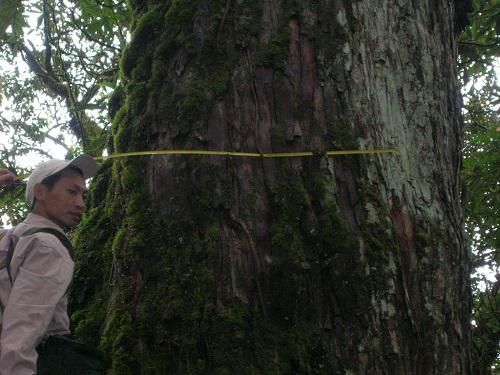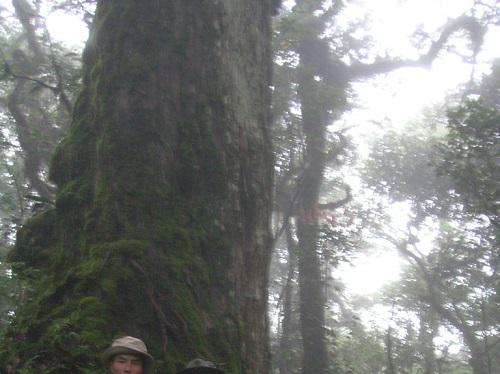Trang Tran
The aim of this project is to promote effective protection of threatened Vietnamese conifers by developing further understanding of their ecology including the current age structure, spatial distribution and dynamic. The project would like to enhance these conifers in-situ conservation and management in the region.

Ancient Fokienia hodginsii.
Vietnam is one of the top ten global conifer conservation ‘hotspots’, as defined by the IUCN SSC Conifer Specialist Group. The variety of Vietnamese conifers is a result of their commingling during northward and southward migrations in the late Tertiary. The Dalat Plateau is one of five centres of plant diversity, one of three endemic bird areas (EBAs) in Vietnam developed by Birdlife International, and the second richest area for conifers in Vietnam. Almost half of total conifer species known to occur in Vietnam are found in this area. Six of these species have been evaluated in the 2004 IUCN Global Red List of Threatened Species. They are Pinus krempfii (VU B1+2c), Pinus dalatensis (VU B1+2c), Pinus latteri (NT), Fokienia hodginsii (NT), Calocedrus macrolepis (VU B1 + 2b), and Cephalotaxus mannii (VU A1d). Pinus krempfii and Pinus dalatensis are endemic and rare species in this area. Two pine species are recognized as endemic to the plateau (Pinus dalatensisi and Pinus krempfii).

Vietnamese conifers have attracted scientists due to their significance, conservation risk and discovery of a number of species new to science. Until now, much of the scientific focus on these species has dealt with their taxonomy and classification. While these are important steps, priority should now be given to understanding the ecological and population sustainability of these unique conifers.
This is one of the urgent reasons leading us to develop this project. This project would enhance our understanding of conifer population dynamics to assist appropriate conservation of them and will launch a publicity campaign to gather public support for their conservation. Six 50 x50 m plots will be established to measure species ecology information. Each 50 x50 m plot will divide into 25 square sub-plots. Information of plot environment will be collected including loc location, elevation, slope aspect, slope steepness, slope configurations, topographical position, and soil characteristics. The project will also measure diameter and heights of all trees (diameter at height breast (dbh) > 10 cm). Cores of sample conifers with height is larger five cm dbh will also be extracted to study their age structure as well as historical disturbance. Coniferous regeneration counts in 2x2 m sampling cells will be counted as well. A comprehensive range of outputs including training/workshops will also be held to focus on direct conservation programs and increased awareness.